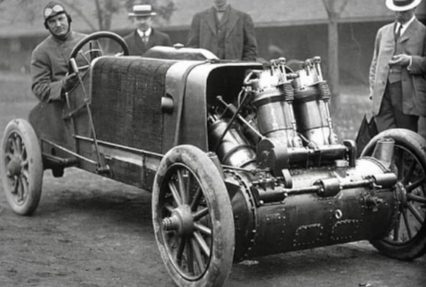


🔥 The Dawn of Motion: Steam-Powered Beginnings (1769–1830s)
The story of the automobile begins in the 18th century with Nicolas-Joseph Cugnot, a French engineer who built the first self-propelled vehicle in 1769—a steam-powered tricycle designed to haul artillery. Though slow and impractical, it marked the first break from animal-powered transport.
Throughout the early 1800s, inventors like Richard Trevithick and William Murdoch experimented with steam carriages. These vehicles were bulky, noisy, and required long startup times, but they laid the groundwork for mechanical mobility.
Steam cars briefly gained popularity in the U.S. and Britain during the 1830s, but poor roads and legal restrictions (like the Red Flag Act in England) stifled their growth. Still, the idea of autonomous transport had been born—and it would soon evolve.
⚙️ 2. The Internal Combustion Breakthrough (1870s–1900s)
The real turning point came with the internal combustion engine (ICE). In 1876, Nikolaus Otto developed the four-stroke engine, followed by Karl Benz, who in 1885 built the first true automobile—a three-wheeled motorcar powered by gasoline.
Benz’s invention was soon rivaled by Gottlieb Daimler and Wilhelm Maybach, who created a more powerful engine and introduced the first four-wheeled car. These pioneers laid the foundation for modern automotive engineering.
By the 1890s, Emile Levassor and Armand Peugeot were producing cars in France, while Henry Ford in the U.S. began experimenting with mass production. The ICE era had begun, and it would dominate the 20th century.
🏭 3. Mass Production and the Ford Revolution (1908–1940s)
In 1908, Henry Ford launched the Model T, revolutionizing transportation with affordability and scale. His use of the assembly line cut production time drastically, making cars accessible to the average American.
Ford’s innovation wasn’t just mechanical—it was social. The Model T transformed rural life, enabled urban expansion, and created a new middle-class mobility. By 1927, over 15 million Model Ts had been sold.
Meanwhile, European brands like Mercedes-Benz, Citroën, and Fiat refined luxury and design. The automobile became a symbol of freedom, status, and progress.
🚀 4. Post-War Innovation and Global Expansion (1950s–1980s)
After World War II, car design and technology surged. Japan entered the scene with Toyota, Honda, and Nissan, offering fuel-efficient, reliable vehicles. The U.S. focused on muscle cars and comfort, while Europe emphasized compact design and engineering finesse.
Safety features like seat belts, crumple zones, and antilock brakes emerged. The oil crises of the 1970s pushed manufacturers toward fuel efficiency, sparking interest in alternative fuels.
This era saw the rise of global brands, international competition, and the birth of the modern auto industry.
The Electric Vehicle (EV) Revolution and Future Mobility (1990s–Present)
Though electric cars date back to the 1800s, their modern resurgence began in the 1990s with GM’s EV1 and later Tesla’s Roadster in 2008. Today, EVs are reshaping the industry with zero emissions, smart connectivity, and AI-driven automation.
Governments worldwide are pushing for EV adoption, with bans on ICE vehicles planned in many countries by 2035. Brands like Tesla, BYD, Rivian, and Tata Motors are leading the charge.
EVs now feature autonomous driving, regenerative braking, and over-the-air updates, making them more than just cars—they’re computers on wheels.






Nice